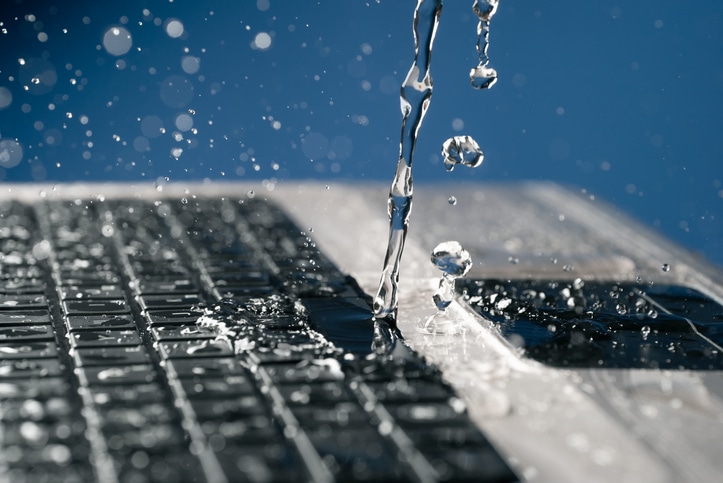
Water is a Major Concern in Product Ruggedness Testing
Water is part of many test methods when evaluating product ruggedness. We live in a world that is predominated by the substance, and its effects on products for any application are severe. Because of this, products must be evaluated for their abilities to endure exposure to water as a solid, liquid, and as a gas. These tests, although seemingly simple, can present challenges to product designers.
Effects of water on products include:
- Possible degradation of strength
- Corrosion or erosion of materials
- Fungal Growth
- Malfunction of electronic and electrical equipment with possibility of hazardous operation
- Fouling of lubricants
- Increased chemical reactions
- Swelling of materials
- Condensation
- Changes in material properties such as elasticity
Ingress Testing
Ingress testing is found in a wide variety of industry specific test methods. Perhaps the standard with the broadest use is IEC 60529 which evaluates a product’s degree of protection as classified by an Ingress Protection Code (IP Code). These tests also involve solid foreign objects including dust. Testing that involves water includes dripping, spraying, splashing, jetting, powerful jetting, temporary immersion, continuous immersion, and water jet with high pressure and temperature.
Similar testing can be found in standards specific to the aerospace, automotive, and military sectors. In the automotive sector a number of ISO, IEC, and proprietary standards are used in evaluation. In defense applications MIL-STD-810 includes testing for blowing rain, humidity, salt fog, immersion, the effects of icing.
Of major concern in these tests are gaskets and seals used to create “waterproof” enclosures. Though it may appear to be an easy task, gasket design can be a great challenge. In many cases a gasket must not only protect against ingress but also serve to attenuate radio frequency energy to meet EMI requirements.
The sealing materials must also endure thermal, solar, and dynamic effects. In some cases, such as wind blown rain, the impact of droplets can cause resonances that defeat otherwise sound barriers.
Humidity
Large portions of the planet experience intense humidity. Some areas experience this year round. Additionally certain applications such as marine will have extreme conditions.
Humidity can wreck havoc in a large number of ways. Prolonged exposure to humidity can degrade plastics. It can interact with deposits of dust and other substances to produce corrosive films.
Testing for the effects of humidity is difficult. Thorough evaluation usually involves lengthy tests that can last months. Aggravated or accelerated testing can at times be useful to point out potential design deficiencies, but it can be difficult to ascertain the validity of data returned with respect to anticipated exposures.
Fungus
Exposure to airborne fungal mycotoxins can be highly hazardous to humans resulting in neurological damage and cancer. Fungus and mold species prosper in humid conditions. A number of test standards can evaluate a products potential for supporting fungal growth.
It can be difficult to ascertain this by a simple analysis of materials in a Bill of Materials because deposits of contaminates may find their way on to a product during manufacturing or actual use. Generally these organisms can attack a wide variety of materials. Additionally their metabolic wastes can degrade materials.
Salt
Airborne salt can cause extreme corrosion. Salt fogs are common in coastal areas and of course in marine applications. Testing of protective coatings is essential for products that can expect such exposure. While test methods can detect possible sources of problems they are not effective simulations of the actual environmental effects.
Of further concern, testing is usually performed on new product. How a protective coating performs after thermal and solar can be difficult to evaluate, as can the effects of dropping, or impacts sustained in actual use.
Water as a Solid
Product ruggedness can be greatly diminished by ice and frost. Deposits of ice can cause structural failures and of course render devices inoperable. Frost and ice can gradually cause failures of seals and gaskets.
It can also cause failure of bonding materials and cause distortion of parts when recurring icing and thawing events occur. Test methods are available for evaluation of ice effects and time should be taken to select appropriate procedures based on a product’s intended usage.
CVG Strategy Product Test Expertise
CVG Strategy has extensive experience in product test and evaluation of product ruggedness and water. We can evaluate products, examine requirements, assess gasketing and sealing methods, and develop a test matrix to ensure that a product will perform as designed for its intended service life. We provide a variety of consultant services to assist in product testing.
We also provide test plan templates for MIL-STD-810, IEC 60529, and a number of other standards. These provide the necessary documentation to ensure that testing is performed as required, functional and operational tests are conducted, and important data is collected.


